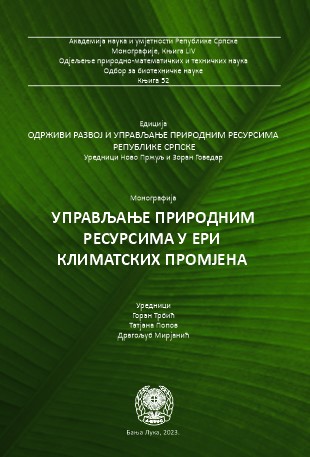Strategic and Planning Documents as Response to Adaptation to Climate Change
DOI:
https://doi.org/10.7251/EORU2308333FKeywords:
: Climate change, adaptation, strategies, spatial plans, Republic of Serbia, Montenegro, Republic of Srpska, Croatia, North MacedoniaAbstract
Although the impact of climate change cannot be certainty predicted, research shows that extreme weather events, such as droughts or heavy rainfall and floods, have become significantly more frequent in recent decades. Therefore, climate change is increasingly a risk and can significantly affect human health, ecosystems, the local and global economy, as well as social, political and cultural patterns. In response to the mentioned challenges that climate change brings, activities related to adaptation appear in the world. One of the first steps is the adoption of national strategic and planning documents that will establish guidelines and a roadmap to a climate-resilient society. In the first part of the paper, we dealt with determining the current strategic and legislative direction of the development of the system of adaptation to climate change of the Republic of Serbia and the surrounding countries ‒ Republic of Srpska, Montenegro, North Macedonia and Croatia. Mutual similarities and differences in the strategic and legislative frameworks of the mentioned countries were determined, while in the second part of the paper, the AAA model was used to examine the prevalence of climate change in the adopted national planning documents. The results of the paper indicate a relatively good (in the Spatial Plan of the Republic of Serbia and the Spatial Development Strategy of the Republic of Croatia) to insufficiently (in the Spatial Plan of the Republic of Srpska, Montenegro and North Macedonia) represented problems of climate change in the analyzed planning documents. The least represented category is Analysis, which is, among other things, the result of an underdeveloped system of monitoring and projection of future greenhouse gas emissions, as well as assessing the sensitivity of certain systems (traffic, sanitary, water) to climate change. The Action component is the most represented in all analyzed plans. The reason is that the planning documents defined development guidelines that are indirectly related to climate change (revitalization and reuse of brownfield sites, renewable sources and solar energy, energy efficiency, management, control and treatment of wastewater, development of multimodal transport systems) but as such, an integral part of climate change adaptation policies, and therefore significant.
